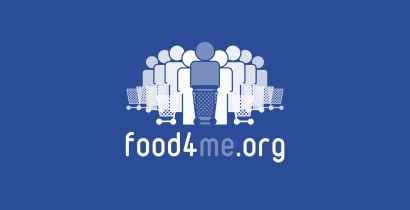Personalised nutrition: Food4Me project
Last Updated : 22 November 2015 The idea of personalised medicine was first introduced by Roger William in the 1950s. It became more attainable only in the early 2000s, when the human genome was mapped, and scientists could study the subtle individual genomic differences. It was soon predicted that personalised nutrition would be the future nutrition model, and that the future delivery of nutritional knowledge would be digital. To progress nutrition into the digital future, we need experts who master two worlds – those who understand the dietary and nutritional surveys, and those who are willing to adapt them to the digital age.
The idea of personalised medicine was first introduced by Roger William in the 1950s. It became more attainable only in the early 2000s, when the human genome was mapped, and scientists could study the subtle individual genomic differences. It was soon predicted that personalised nutrition would be the future nutrition model, and that the future delivery of nutritional knowledge would be digital. To progress nutrition into the digital future, we need experts who master two worlds – those who understand the dietary and nutritional surveys, and those who are willing to adapt them to the digital age.
Professor Mike Gibney
Food4Me project
Within the EU-funded Food4Me project, a multi-centre study was performed, as a proof of principle that a fully Internet delivered personalised nutrition advice could make a difference in people’s lifestyle. The project envisaged personalised nutrition advice at three levels:
- The person’s diet only
- The diet combined with knowledge of the person’s phenotype (measurable traits, such as physical and biochemical measurements, e.g. height, weight or cholesterol level),
- The diet, phenotype and genotype (that determine a person’s heritable gene identity; e.g. a gene variant associated with weight gain).
Questionnaire development for a digital age
Food4Me developed a novel, Internet delivered, food frequency questionnaire for personalised dietary analysis. It allowed for a feedback based on the subject’s prevailing food choices. The new method that included a digital photographic atlas was used to quantify food intake, took approximately 20 minutes to complete, and was validated in 2 peer-reviewed studies.
Does personalised nutrition work?
The study participants, more than 1,200 people from 7 participating European centres, were randomised to one of four different types of advice:
- No personalised advice, only directed to open access healthy eating websites within their country (control group).
The three other groups received personalised feedback based on:
- Diet alone,
- Diet and phenotype,
- Diet, phenotype and genotype.
On average, the personalised nutrition groups always performed better at improving dietary intake compared to the control group, regardless of the advice level. When comparisons were made across the three personalised groups, there were no significant benefits of combined approaches above the personalised dietary feedback, suggesting that personal is what matters most.
Future uses
In the future, personalised dietary analysis could be translated into meal pattern analysis and integrated with digital data in the retail sector and canteen environment. Data could also be integrated with smart kitchen devices, such as fridges allowing instant feedback on recent nutrient intake and intelligent directions as to future food choices. Eating has always been personal; now the delivery of nutrition information will be personal as well.
For more information:
- Food4Me org
- EUFIC (2015). EU-funded Food4Me project paves way for personalised nutrition to better public health. Food Today n° 97.
